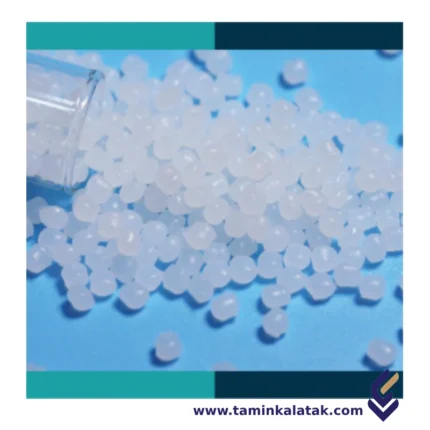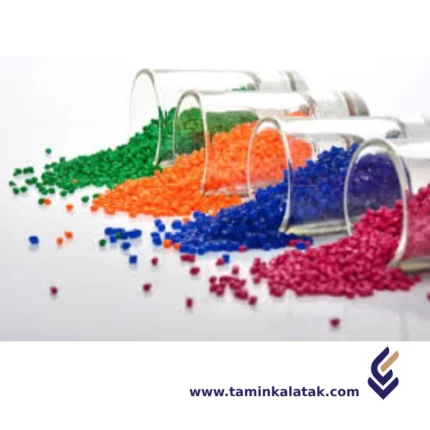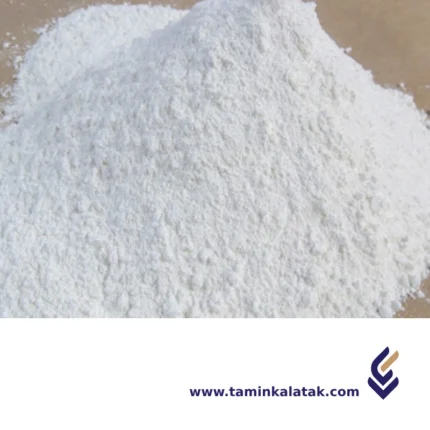Clarifying Masterbatch
Clarifying masterbatch is a type of additive used in plastic manufacturing to improve transparency, gloss, and mechanical properties in semi-crystalline polymers like polypropylene (PP). It enhances the clarity and brightness of finished products by modifying the polymer's crystallization behavior.
Structure
The structure of clarifying masterbatch consists of a polymer carrier resin, typically polypropylene (PP), combined with a clarifying agent such as sorbitol-based compounds, phosphate esters, or nucleating agents. The clarifying agent works by modifying the crystallization behavior of semi-crystalline polymers, reducing the size of spherulites formed during cooling, which enhances transparency and gloss. The masterbatch is formulated with a precise concentration of additives to ensure uniform dispersion within the polymer matrix. In addition to the clarifying agent, the formulation may include processing aids, stabilizers, and dispersants to improve compatibility, flowability, and thermal stability. The overall structure ensures that when mixed with raw polymer during processing, the masterbatch effectively enhances optical properties while maintaining mechanical strength and process efficiency.Properties
Clarifying masterbatch possesses several key properties that enhance the optical and mechanical performance of polypropylene and other semi-crystalline polymers. It improves transparency by reducing haze and increasing light transmission, giving the final product a glass-like appearance. The masterbatch also enhances surface gloss, making the material more visually appealing. In addition to optical benefits, it increases stiffness and impact resistance, ensuring that the material remains durable while maintaining flexibility. It also optimizes processing by lowering the melting temperature, reducing cycle times, and improving mold release, which enhances production efficiency. Furthermore, clarifying masterbatch is thermally stable, ensuring long-term performance without degradation, and is often formulated to comply with FDA and food-grade safety standards, making it suitable for food packaging and medical applications. Applications of Clarifying Masterbatch:- Food Packaging – Used in transparent containers, trays, and beverage cups.
- Household Products – Applied in storage boxes, kitchenware, and organizers.
- Medical Devices – Used in syringes, vials, IV components, and lab equipment.
- Automotive Components – Enhances clarity in light housings and interior parts.
- Thin-Wall Injection Molding – Improves transparency in cosmetic packaging and electronic casings.
- Blow Molding and Extrusion – Used in clear bottles, films, and thermoformed sheets.
- Enhances Transparency – Reduces haze and increases clarity in polypropylene.
- Improves Gloss and Aesthetic Appeal – Provides a smooth, shiny surface.
- Increases Stiffness and Strength – Enhances mechanical properties without brittleness.
- Optimizes Processing Efficiency – Lowers processing temperature and cycle time.
- Compatible with Food and Medical Applications – Often FDA-approved for safety.
- Reduces Material Costs – Allows for thinner wall sections while maintaining strength.
- Limited Compatibility – Mainly effective for polypropylene, with minimal impact on other polymers.
- Processing Sensitivity – Requires precise temperature control to achieve maximum clarity.
- Potential Cost Increase – Higher-quality clarifying agents may raise material costs.
- Aging and Performance Stability – Some clarifying agents may degrade over time, reducing effectiveness.
Polishing Masterbatch
Polishing masterbatch is a type of additive used in the plastic industry to enhance the surface quality, gloss, and smoothness of plastic products. It is commonly used in injection molding, extrusion, and film production processes to improve the appearance and feel of the final product.
Structure
Polishing masterbatch is a specialized additive used in plastic processing to enhance the surface finish, gloss, and smoothness of the final product. It typically consists of a carrier resin, which is compatible with the base polymer, along with finely dispersed polishing agents, lubricants, and processing aids. The polishing agents, often inorganic materials like silica or wax-based compounds, help to reduce surface roughness and improve optical properties. Lubricants such as stearates facilitate smoother processing by reducing friction during extrusion or molding. Processing aids optimize the dispersion of the active components and ensure uniformity in the final application. The structure of polishing masterbatch allows it to be easily mixed with the base polymer, enhancing the end product’s appearance, reducing surface defects, and improving overall quality in applications like films, sheets, and molded components.Properties
Polishing masterbatch possesses several key properties that enhance the quality of plastic products. It improves surface gloss and smoothness, giving the final product a shiny and polished appearance. The masterbatch enhances scratch resistance, reducing the likelihood of surface defects and wear over time. It also provides excellent dispersion within the polymer matrix, ensuring uniform distribution and consistent performance. With good thermal stability, it can withstand high processing temperatures without degrading or causing discoloration. Additionally, it offers low friction and anti-stick properties, which facilitate easier processing and demolding. Some formulations may also include anti-static or UV-resistant properties to further enhance durability. Overall, polishing masterbatch is designed to improve the aesthetic and functional properties of plastics while maintaining compatibility with various polymer systems.Applications
- Used in plastic films to enhance gloss and smoothness for better visual appeal.
- Applied in injection molding and extrusion processes to improve the surface finish of plastic products.
- Utilized in automotive interior and exterior parts for a polished and scratch-resistant surface.
- Employed in household and consumer goods to enhance the aesthetic quality and durability.
- Used in packaging materials to improve transparency and surface quality.
- Applied in synthetic fibers and textiles to enhance smoothness and reduce friction.
Advantages
- Enhances surface gloss and smoothness, improving the overall appearance.
- Improves scratch and wear resistance, increasing the lifespan of plastic products.
- Provides uniform dispersion within the polymer matrix for consistent quality.
- Reduces surface friction, aiding in smoother processing and demolding.
- Compatible with a wide range of polymers, making it versatile in applications.
- Helps reduce production defects such as flow marks and rough surfaces.
- Can offer additional functionalities like UV resistance or anti-static properties.
Disadvantages
- May slightly alter the mechanical properties of the base polymer, such as flexibility or toughness.
- Can increase production costs due to the addition of specialized additives.
- In some cases, excessive use may affect transparency or optical clarity.
- Not all formulations are compatible with every type of plastic, requiring specific selection.
- Potential for migration over time, which may affect long-term performance in certain applications.
Processing Aid Masterbatch
Processing Aid Masterbatch (PPA) is an additive used in plastic processing to improve the flowability, surface finish, and processing efficiency of polymers. It helps reduce melt fracture, die buildup, and energy consumption during extrusion, injection molding, and blow molding.
Structure
The structure of Processing Aid Masterbatch consists of three main components: a carrier resin, a processing aid additive, and optional dispersing agents. The carrier resin, typically LDPE, LLDPE, PP, or EVA, acts as a medium to evenly distribute the active processing aid within the polymer. The core functional ingredient, the processing aid additive, is usually a fluoropolymer (PTFE-based), silicone-based material, wax, or metal stearate, which enhances polymer flow, reduces melt fracture, minimizes die buildup, and improves surface finish. To ensure uniform dispersion and stability, additional dispersing agents such as compatibilizers, antioxidants, and lubricants may be included. This structured composition allows the processing aid masterbatch to integrate seamlessly into plastic formulations, optimizing melt flow, reducing processing defects, and enhancing the overall quality of extruded and molded plastic products.Properties
Processing aid masterbatch possesses several key properties that enhance the efficiency and quality of plastic processing. It improves the melt flow of polymers, reducing viscosity and enabling smoother extrusion or molding. One of its most significant characteristics is the reduction of melt fracture, commonly known as the sharkskin effect, which results in a smoother surface finish and improved clarity in films. It also minimizes die buildup, reducing maintenance requirements and increasing production efficiency. Additionally, processing aid masterbatch enhances the dispersion of fillers and pigments, ensuring uniformity in the final product. It helps in reducing energy consumption by lowering processing temperatures and extrusion pressure. Furthermore, it provides improved lubrication, leading to reduced shear stress and wear on processing equipment. These properties make processing aid masterbatch essential in applications such as film extrusion, blow molding, injection molding, and wire and cable coatings, ensuring better quality and higher productivity in plastic manufacturing.Applications of Processing Aid Masterbatch
- Blown Film Extrusion: Improves melt flow, reduces melt fracture, and enhances surface finish.
- Cast Film Extrusion: Enhances gloss, clarity, and mechanical properties.
- Pipe and Profile Extrusion: Reduces die build-up and improves surface quality.
- Injection Molding: Facilitates mold filling, reduces cycle time, and improves part appearance.
- Blow Molding: Ensures uniform thickness and better mold release.
- Wire and Cable Coating: Reduces die drool and improves surface finish.
- Sheet Extrusion: Ensures uniform thickness and enhances mechanical properties.
- Recycling of Plastics: Improves melt flow and reduces defects in recycled materials.
Advantages of Processing Aid Masterbatch
- Improved Processability: Enhances melt flow and reduces processing defects.
- Enhanced Surface Quality: Provides a smooth, glossy, and defect-free surface.
- Reduced Melt Fracture: Prevents sharkskin defects and uneven surfaces.
- Energy Efficiency: Lowers processing temperature and energy consumption.
- Increased Output: Boosts productivity by reducing processing time.
- Cost Reduction: Minimizes waste and extends equipment life.
- Better Dispersion: Ensures uniform distribution of additives in polymers.
- Wide Polymer Compatibility: Suitable for polyolefins, PVC, and other thermoplastics.
Disadvantages of Processing Aid Masterbatch
- Additional Cost: Adds to production expenses.
- Compatibility Issues: May require formulation adjustments for some polymers.
- Impact on Mechanical Properties: Overuse may affect strength and durability.
- Temperature Sensitivity: Some additives degrade at high temperatures.
- Environmental Concerns: Some materials may not be biodegradable.









